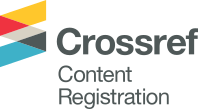Spray-Pyrolysis Preparation of Li4Ti5O12/Si Composites for Lithium-Ion Batteries
DOI:
https://doi.org/10.18321/ectj793Keywords:
lithium-ion battery, spray pyrolysis, lithium titanium oxideAbstract
This paper introduces the novel anode material which is Li4Ti5O12/Si prepared by gas-stated method, mainly spray-pyrolysis technique. The literature review performed in this paper revealed two main components which can be potentially mixed into the efficient anode material. Silicon (Si) has the highest possible capacity of 4200 mAh g-1 among all commonly used anodes. Due to its ‘zero-strain’ (<1% volume change) properties and stable cycling, Li4Ti5O12 (LTO) is considered as a promising anode for lithium ion batteries. Combination of these two anode materials is considered as a promising approach to prepare a high performance composite anode. The precursor solution consisted of homogeneous mixture of lithium nitrate and titanium tetraisopropoxide dissolved in deionized water with equimolar concentration of 0.5 M. The aerosol formation was performed at nitrogen environment and the droplets were carried into the quartz tube reactor at the flowrate of 4 L min-1. The rector temperature was held at 800 °C. The spray-pyrolysis synthesis was performed as one-step operation, excluding the need of calcination of as-prepared powders, and continuous process by the mean of peristaltic pump. The as-prepared powders had wide size distribution from nanometers to microns. The materials obtained had well-crystallized structure with insignificant amount of impurities. The powders were analyzed by the following analytical equipment: 1) the presence of Li4Ti5O12 and Si in the obtained composite was confirmed by X-ray diffraction technique (XRD); 2) The structure and morphology of LTO and Si molecules were observed and studied with Scanning Electron Microscopy (SEM).
References
(1). A. Manthiram, J. Phys. Chem. Lett. 2(3) (2011) 176–184. Crossref DOI: https://doi.org/10.1021/jz1015422
(2). L. Yanga, B. Ravdelb and B.L. Lucht, Electrochem, Solid-State Lett. 13 (2010) A95– A97. Crossref DOI: https://doi.org/10.1149/1.3428515
(3). R. Marom, S.F. Amalraj, N. Leifer, D. Jacob and D. Aurbach, J. Mater. Chem. 21 (2011) 9938– 9954. Crossref DOI: https://doi.org/10.1039/c0jm04225k
(4). F. Orsini, A. du Pasquier, B. Beaudouin, J.M. Tarascon, M. Trentin, N. Langenhuizen, E. de Beer and P. Notten, J. Power Sources 76 (1998) 19–29. Crossref DOI: https://doi.org/10.1016/S0378-7753(98)00128-1
(5). M. Wagemaker and F.M. Mulder, Acc. Chem. Res. 46 (2013) 1206–1215. Crossref DOI: https://doi.org/10.1021/ar2001793
(6). P. Li, S.S. Qian, H.X. Yu, L. Yan, X.T. Lin, K. Yang, N.B. Long, M. Shui and J. Shu, J. Power Sources 330 (2016) 45–54. Crossref DOI: https://doi.org/10.1016/j.jpowsour.2016.08.138
(7). K. Yang, H. Lan, P. Li, H. Yu, S. Qian, L. Yan, N. Long, M. Shui and J. Shu, Ceram. Int. 43 (2017) 10515–10520. Crossref DOI: https://doi.org/10.1016/j.ceramint.2017.05.105
(8). A. Moretti, G.T. Kim, D. Bresser, K. Renger, E. Paillard, R. Marassi, M. Winter and S. Passerini, J. Power Sources 221 (2013) 419–426. Crossref DOI: https://doi.org/10.1016/j.jpowsour.2012.07.142
(9). S.K. Martha, O. Haik, V. Borgel, E. Zinigrad, I. Exnar, T. Drezen, J.H. Miners, and D. Aurbach, J. Electrochem. Soc. 158 (2011) A790–A797. Crossref DOI: https://doi.org/10.1149/1.3622849
(10). G.N. Zhu, L. Chen, Y.G. Wang, C.X. Wang, R.C. Che and Y.Y. Xia, Adv. Funct. Mater. 23 (2013) 640–647. Crossref DOI: https://doi.org/10.1002/adfm.201201741
(11). A.S. Prakash, P. Manikandan, K. Ramesha, M. Sathiya, J.M. Tarascon and A.K. Shukla, Chem. Mater. 22 (2010) 2857–2863. Crossref DOI: https://doi.org/10.1021/cm100071z
(12). X. Zuoa, J. Zhua, P. Müller-Buschbaumb and Y.-J. Cheng, Nano Energy 31 (2017) 113–143. Crossref DOI: https://doi.org/10.1016/j.nanoen.2016.11.013
(13). M. Rahman, G. Song, A.I. Bhatt, Y.C. Wong and C. Wen, Adv. Funct. Mater. 26 (2016) 647–678. Crossref DOI: https://doi.org/10.1002/adfm.201502959
(14). T. Song, J. Xia, J.-H. Lee, D.H. Lee, M.-S. Kwon, J.-M. Choi, J. Wu, S.K. Doo, H. Chang, W.I. Park, D.S. Zang, H. Kim, Y. Huang, K.-C. Hwang, J.A. Rogers and U. Paik, Nano Lett. 10 (2010) 1710–1716. Crossref DOI: https://doi.org/10.1021/nl100086e
(15). C.K. Chan, R.N. Patel, M.J. O’Connell, B.A. Korgel, Y. Cui, ACS Nano 4 (2010) 1443–1450. Crossref DOI: https://doi.org/10.1021/nn901409q













